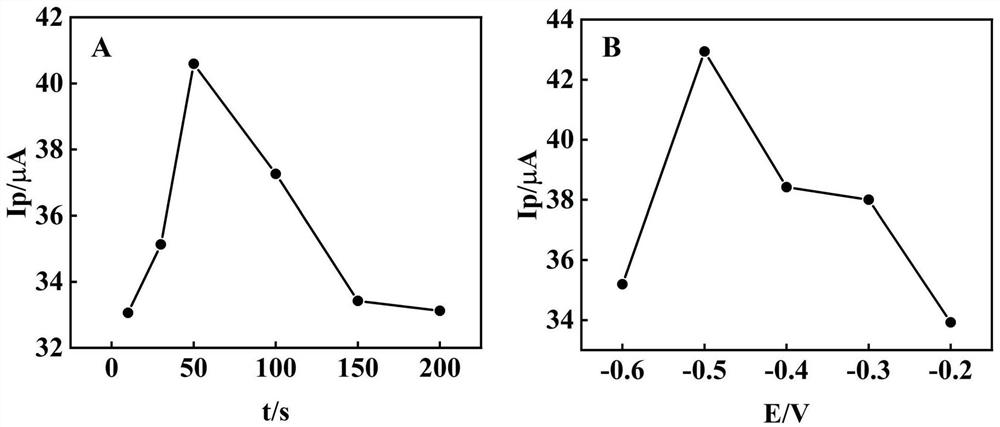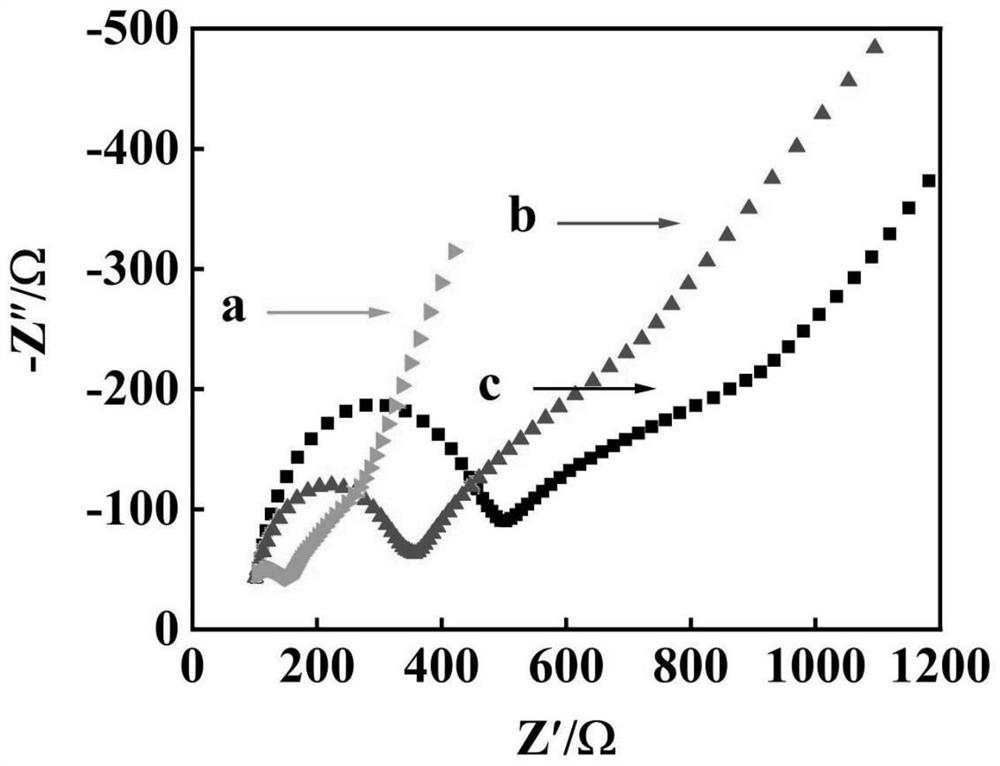Sequence for determining escherichia coli gene by using nanogold-graphdiyne composite material modified electrode
A technology of nanocomposite materials and modified electrodes, which is used in analytical materials, determination/inspection of microorganisms, material analysis by electromagnetic means, etc.
- Summary
- Abstract
- Description
- Claims
- Application Information
AI Technical Summary
Problems solved by technology
Method used
Image
Examples
specific Embodiment approach 1
[0016] (1) Preparation of base electrode CILE: After fully mixing and grinding graphite powder, ionic liquid and liquid paraffin in a certain proportion, put them into a glass electrode tube with fine copper wire inserted and compact them, and then obtain ionic liquid modified carbon paste electrode ( CILE), sand to a mirror finish on polishing paper before use.
[0017] (2) Preparation of Au-GDY nanocomposite modified electrode: 8 μL of 1.0 mg / mL GDY solution was drop-coated on the surface of CILE substrate electrode, and dried at room temperature to obtain GDY / CILE modified electrode; then it was placed in 1.6 mg / mL mL HAuCl 4 The constant potential deposition was carried out in the solution, the deposition potential was -0.5 V (vs. Ag / AgCl), and the deposition time was 50 s. Then the electrode was washed and dried naturally to prepare the Au / GDY / CILE modified electrode.
[0018] (3) Immobilization of the probe ssDNA sequence and hybridization with the target ssDNA: 10 μL ...
specific Embodiment approach 2
[0019] Specific embodiment 2, characterization of Au-GDY nanocomposite modified electrode: the SEM characterization results of CILE electrode are as follows figure 1 As shown in A, the inner illustration is the microscopic surface of CILE after magnification, and the smooth and smooth surface can be seen. figure 1 B is GDY dispersed on the surface of CILE. It can be seen that although GDY is stacked together, compared with CILE with the same geometric area, the presence of GDY provides a larger specific surface area. figure 1 C is uniform Au nanoparticles loaded on the surface of GDY.
specific Embodiment approach 3
[0020] Specific embodiment 3, time and potential optimization of electrochemical deposition of gold: In potassium ferricyanide electrolyte, the deposition time and potential of gold nanoparticles were studied. figure 2 In A, as the gold deposition time increases (10 s to 50 s), the current gradually increases, and in the next 200 s, the current gradually decreases, so the maximum response current is reached at 50 s, which is regarded as the optimal gold immersion time. At the same time, electrochemical tests were carried out on the deposition potential of gold nanoparticles between -0.6 V and -0.2 V. The results show that the modified electrode has the maximum current response when the deposition potential of gold is -0.5 V, as figure 2 Shown in B. Therefore -0.5 V is the optimal deposition potential of gold.
PUM
| Property | Measurement | Unit |
|---|---|---|
| Sensitivity | aaaaa | aaaaa |
Abstract
Description
Claims
Application Information
 Login to View More
Login to View More - R&D
- Intellectual Property
- Life Sciences
- Materials
- Tech Scout
- Unparalleled Data Quality
- Higher Quality Content
- 60% Fewer Hallucinations
Browse by: Latest US Patents, China's latest patents, Technical Efficacy Thesaurus, Application Domain, Technology Topic, Popular Technical Reports.
© 2025 PatSnap. All rights reserved.Legal|Privacy policy|Modern Slavery Act Transparency Statement|Sitemap|About US| Contact US: help@patsnap.com



